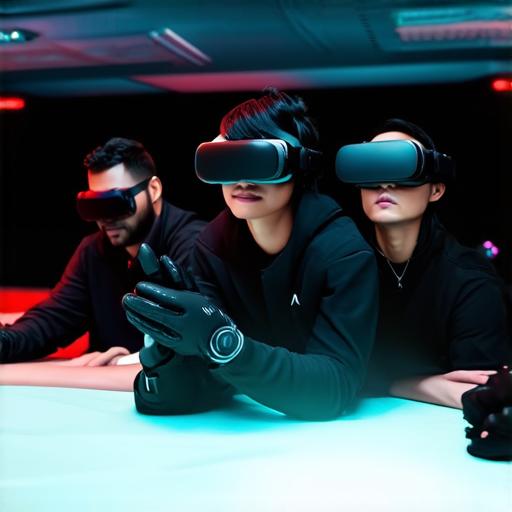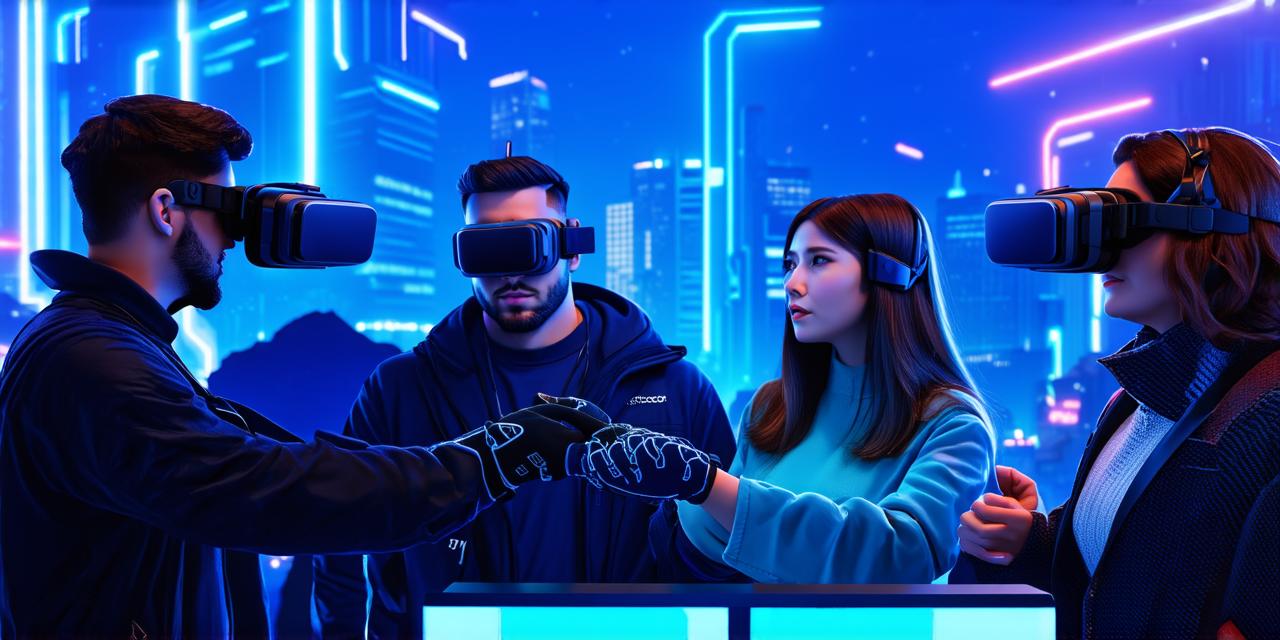
Metaverse: The Future of Virtual Reality and Augmented Reality
The metaverse is a term used to describe a virtual world that combines elements of augmented reality (AR), virtual reality (VR), blockchain, artificial intelligence (AI), and other technologies. This virtual world allows users to interact with each other in a digital environment, creating a new way of living, working, and socializing.
Metaverse: The Future of Virtual Reality and Augmented Reality
The metaverse is a term used to describe the convergence of virtual reality (VR), augmented reality (AR), blockchain, artificial intelligence (AI), and other technologies to create a digital environment that users can interact with in real-time. This digital world allows users to socialize, work, and play in a virtual space that is more immersive than traditional online platforms.
One of the key features of the metaverse is its decentralized nature. Unlike traditional social media platforms, which are controlled by a single entity, the metaverse is built on blockchain technology, allowing users to have more control over their data and interactions.
Another important aspect of the metaverse is its potential for economic growth. The virtual world provides a platform for businesses and individuals to create new products and services that can be sold in the real world. This creates new opportunities for entrepreneurship and innovation, as well as potentially creating new industries.
How Many Individuals are Using the Metaverse?
As mentioned earlier, there isn’t an exact number of individuals using the metaverse. However, recent studies suggest that virtual reality (VR) and augmented reality (AR) technologies have been on the rise in recent years.
According to a report by Statista, the number of VR headset shipments worldwide increased from 1.9 million in 2015 to 6.3 million in 2018. Similarly, the global AR market is expected to reach $223.2 billion by 2026, growing at a CAGR of 41.7% between 2021 and 2026.
While these numbers suggest that there is a growing interest in VR and AR technologies, they don’t necessarily translate to the metaverse. The term “metaverse” was first coined by science fiction author Neal Stephenson in his 1992 novel Snow Crash, and it has since been popularized by tech visionaries like Mark Zuckerberg, who has talked about his plans for a decentralized social media platform called Horizon.
Factors Driving the Growth of Virtual Reality (VR) and Augmented Reality (AR) Technologies
While there isn’t an exact number of individuals using the metaverse, there are several factors that are driving the growth of virtual reality (VR) and augmented reality (AR) technologies.
- Advancements in Technology
- Gaming
- Healthcare
- Education
- Remote Work
Conclusion
The metaverse is a term used to describe the convergence of virtual reality (VR), augmented reality (AR), blockchain, artificial intelligence (AI), and other technologies to create a digital environment that users can interact with in real-time. While there isn’t an exact number of individuals using the metaverse, recent studies suggest that virtual reality (VR) and augmented reality (AR) technologies have been on the rise in recent years.
ʾ
Factors such as advancements in technology, gaming, healthcare, education, and remote work are driving the growth of VR and AR technologies. As these technologies continue to improve and become more accessible, we can expect to see a growing interest in the metaverse and its potential for economic growth.
In conclusion, the metaverse is an exciting new development that has the potential to revolutionize the way we live, work, and socialize. While there is still much to be learned about this digital world, it’s clear that the future of virtual reality and augmented reality is bright.
